

Warning – this blog has in excess of 200 photographs – please sit back, take your time and enjoy the spectacle that is Antarctica…
Scott, Shackleton, whaling, massive calving icebergs, penguins, the Drake passage, leopard seals, albatross… we all know Antarctica is there but how many of us really believe that one day we’ll actually go there? Not me.
The opportunity came about when one of our Directors was invited to sit on the Lindblad Advisory Board and with that invitation came to travel to Antarctica. This trip was two years in the planning for the simple reason that it is probably one of Lindblad’s most popular and is booked way in advance. So, if you decide you want to go, plan well ahead. It is May 2019 as I write and 2021 would likely be your first opportunity.

Such a trip is daunting especially from a photography point of view, but by reading all the information provided and looking on-line it is possible to depart confident that you have the right equipment. I will list what I consider to be essentials at the end of this piece.

The Lindblad Expeditions, like many other companies no doubt, begin their trips in either Buenos Aires or Santiago. Ours began in Santiago where almost all participants gathered the night before for a welcome drinks and an introductory briefing. The following day we flew south to Ushuaia on a charter flight and spent the middle part of the day cruising the Beagle Channel and seeing some of the wildlife. It was an unusually beautiful day. We boarded the MV National Geographic Orion late afternoon and were soon heading south. Were I to go again, I may head directly to Ushuaia early, stay in one of two fine hotels overlooking the city and its pier from which all the ships depart, rest up there and then make my way to the ship at the appropriate time. There is plenty to see and do in Ushuaia, and you may prefer to do it independently as a private party.

Beagle channel…


A tern colony, Beagle channel…

Ushuaia, the southern-most ciry in the world
The ship was extraordinarily nice. Cabins were surprisingly spacious and each participant was gifted a Lindblad/Nat Geo Antarctic Expedition parka. The sitting, dining and observation rooms were all perfect for purpose and pleasant places to be, especially the observation lounge in the mornings. Even the hallways and passageways were light, friendly and informative with inspiring photography on the walls and lots of educational information on the notice boards. There were no issues with power, water or any of the problems one can often encounter.


The staff broke down into three main teams: the ship’s crew under Captain Aaron Wood; the guides and lecturers lead by Expedition Leader Peter Wilson from County Cork, Ireland; and the hotel team lead by Hotel Manager Tracy Greiner whose husband Lothar was the Head Chef. Each were superb, particularly the dining room staff whose ability to know everyone’s name and what they liked and disliked very quickly, it was truly impressive and made visits to the dining room a joy. The food was equally impressive, we never wanted for superb fruit, veg or salads, which were in good supply throughout the trip.


There was no doubt that there was nervousness about the two-day crossing of the Drake Passage. Everyone was ready with pills and patches. The Captain did an excellent job of explaining what to expect and why and his predictions were accurate. We were basically travelling with the wind and waves from one side behind us which made the ship roll in a particular way. We did not see the spectacle of the ship’s bow being buried into on-coming waves because they were behind us. Apparently on the way south we experienced the Drake Passage in a 5/10 mood. At times it made me feel a pity woozy but there were a few that disappeared for the duration of the crossing, many who remained with patches and some whom were not affected at all.


Mollie Fitzgerald poses nervously as the waves roll toward the ship during the Drake Pasage crossing

Giant petrel followed the ship for much of the crossing…








Albatross were a more rare and distant sight…


Cape petrel began to appear as we neared land…




They stayed with the ship all the way to the South Shetlands…


During the crossing we were given mandatory briefings on our time in Antarctica with particular focus on preparing for hygiene. All boots, coats, walking sticks, tripod legs and ruck sacks had to be inspected for debris and most were either washed or vacuumed. The key was to avoid us bringing any bacteria to any of the landings nor to move bacteria from one place to another. The hygiene routine continued for the duration of the trip for as long as we were going ashore. There were also some lectures on photography though one of the resident professionals did go down with sea sickness.

Vacuuming backpacks…

…and disinfecting…
What does not happen is being briefed or told our itinerary because as much as there might be a vague plan, the weather dictates what we do and where we go. We did not realise it at the start but we soon began to realise how important and skilled the relationship was between expedition leader Peter and Captain Wood. Together, they mastermind dodging the weather and for us there was a lot of dodging to do, and it was handled superbly. It seems like there was bad weather just around every corner but because of their skills we managed to have amazing weather for the duration of the trip.

Captain Wood at the helm and looking for whales…

The numbers of Cape petrels grew as land was sighted…



The South Shetlands… our first sight of land though not the Antarctic mainland…




When we finally reached Barientos Island in the South Shetlands on the afternoon of the 7th February, we were all ready for action! The next five days we would either make a shore excursion, a zodiac cruise, whale watch or even kayak.

Ready!!


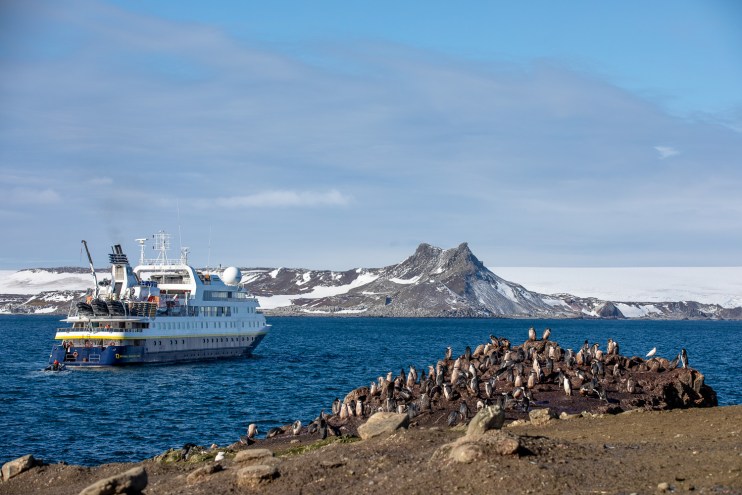

My first Gentoo penguin meeting…

…and then a Chinstrap…

…then the family…




…who were hungry



I quickly realised that the place to be was the entry and exit points from the colony to the sea…

…where the penguins made some amusing arrivals…





After our first penguin colony experience, we cruised south-west overnight to arrive at Paradise Bay where we did our first zodiac cruise amongst the extraordinary icebergs and mountains of the Antarctic peninsula. This is where we first touched mainland Antarctica.

Morning arrival at Paradise Bay…













Gentoo penguins on the move everywhere…








…and Humpback whales





In the afternoon we visited Port Lockroy and Britain’s most southerly Post Office. Port Lockroy was used as an anchorage by whalers and established as Base A by the British in 1944 as part of a secret wartime initiative to monitor German shipping movements. This expedition was code-named Operation Tabarin, after a well-known Paris nightclub, because team members would be staying there during the darkness of the Antarctic winter. After World War II the station continued in a civilian capacity until 1964 when it ceased operations. The historic base was recently restored and is now open to visitors as a museum. They have souvenirs for sale (information packs, hats, pins, patches, t-shirts and first day covers), as well as a Post Office. We visited the museum and spent time with penguins and Antarctic shags at Jougla point opposite the base.

Our day Paradise Island and Port Lockroy…

Crabeater seal…

Naturalist Andreas Madsen




Antarctic or blue-eyed shag


Why is the ice clear in some places and white in others? Discuss!









Whale bones… in 1931 29,000 blue whales were taken by the whaling industry…





That evening, we headed south again to try and pass through the Lemaire Channel. I am not sure if it was the ice that stopped us or the extraordinary beauty of the evening but we stopped just short of the channel and admired the spectacle before us. Everyone, crew and guests alike, felt privileged to be there at that moment. The crew agreed it was the most spectacular Antarctic evening they had ever witnessed.

Our evening at the Lemaire Channel grew ever more spectacular…

















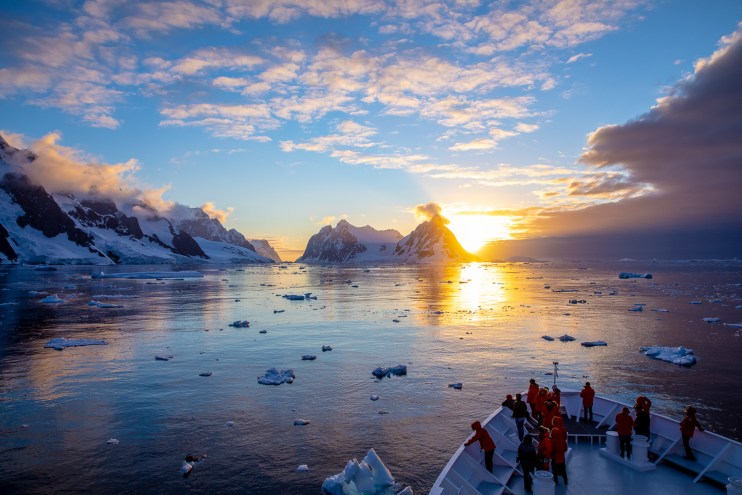









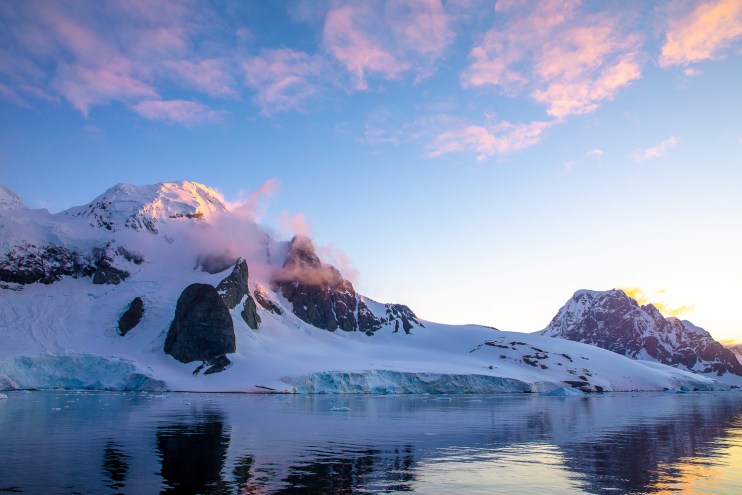


The following morning was equally stunning. I will never forget easing our way slowly into Neko Harbour amidst stunning scenery. Peter and the Captain had elected to turn and move away from oncoming weather and what a decision it was. Neko Harbour was silent and stunning and that morning proved to be as memorable as the evening before. We went ashore to a penguin colony and enjoyed beautiful weather all morning amidst Gentoo penguins that had clearly not enjoyed a good summer. The chicks were behind and the guides feared whether they would be ready to leave before winter arrived. In the afternoon, we went a little north to Curverville Island where some kayaked and others zodiac-cruised among the icebergs and humpback whales with penguins on the move jumping all around.

Cruising into Neko Harbour…









 \
\ 







Skuas are constantly patrolling the penguin colonies…


The result of skua success…





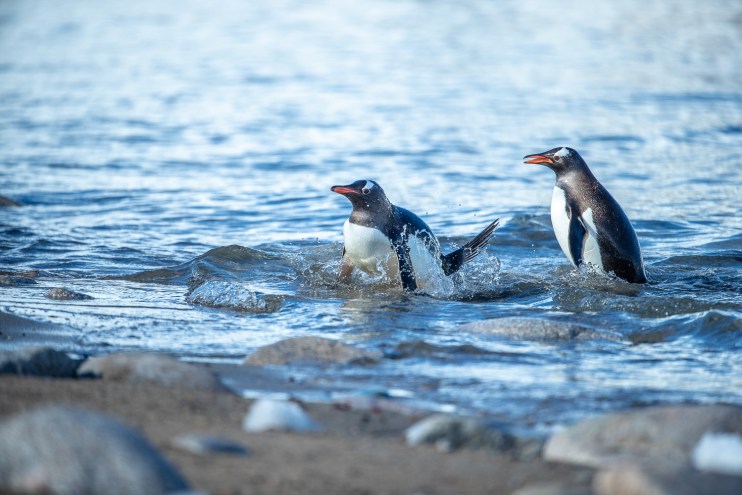

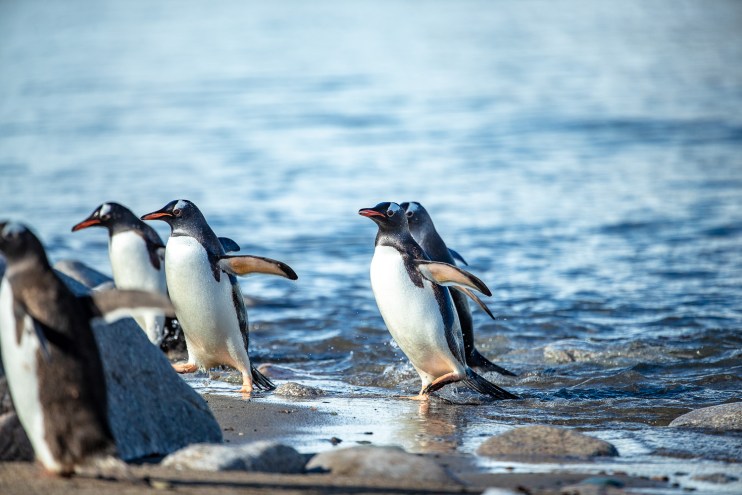


















Patrolling skua…



Our afternoon at Curverville Island…










The scientific team working with the Humpback whales…










Antarctic fur seals…



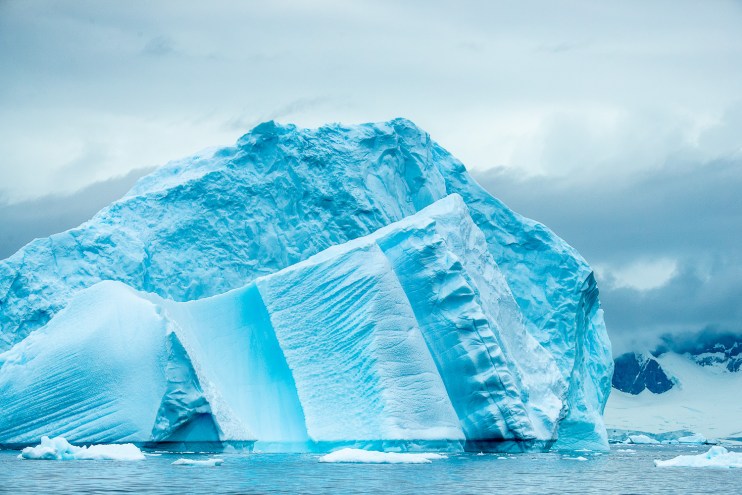









It was just before we departed that the announcement about the Polar Plunge was made. We knew it would come but not quite so soon! The Polar Plunge is the opportunity to jump into the Antarctic waters off the back of the ship under controlled conditions. With staff all around, including divers, photographers etc one leaps off the back of the boat in front of the majority of the ship’s company into water which was about freezing. When entering the water, you feel nothing, for me there was no immediate gasp, it was two or three seconds later that the bite of the cold hits and all you want to do is get out as quickly as possible. As you leave the water, you are really, really cold and despite being wrapped in a gown, it takes a while to regain body temperature but the bragging rights are worth it!

The Polar Plunge!!!


Another incredible Antarctic evening evolved…














During a briefing from Peter and the Captain that evening, it was explained that we were still running from bad weather and would be making an 18-hour run east away from the weather toward the Antarctic Sound and the northern part of the Weddell sea, described by historian Thomas R Henry as ‘the most treacherous and dismal region on earth’! It was not for us. It was stunning and quiet and beautiful in an eerie kind of way. Our first stop was Gourdin Island where we zodiac-cruised through substantial icebergs and had very close encounters with our first leopard seals and Adélie penguins (our third species of penguin having been with Gentoo and Chinstrap until then).

Our afternoon at Gourdin Island…








A Skua enjoys penguin scraps left by a leopard seal…









Expressions of a leopard seal!!


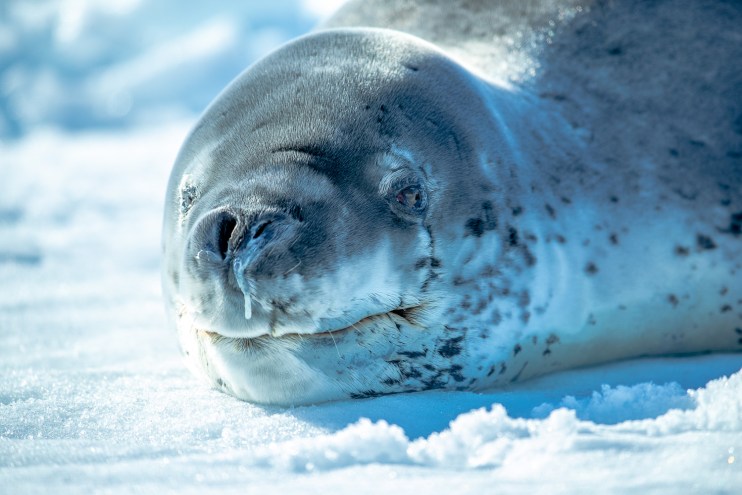




Meet the Adélie penguin, the most threatened of the Antarctica penguin species…



Adélies on the move…



A Giant petrel…



Another evening of incredible colour…


A fourth amazing night of colour…






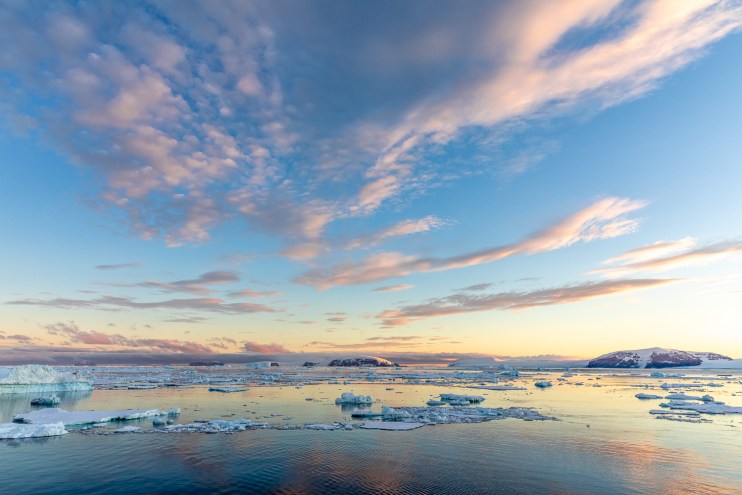











The following morning we visited Brown Bluff, a large penguin colony full of adolescent penguins learning to swim and frolicking on the beach.

A quick check of the landing site before our morning excursion…

A morning chat…


Underwater Adélies…








Some interesting hair days!!!
















That afternoon we headed round the peninsula further south into the Weddell sea, considered the clearest water in the world, and spent the afternoon with fin, humpback and killer whales which were busy teaching their young to hunt and kill penguins. The day just got better, a blue whale sighting on a beautiful silent evening which, as if contracted to perform for us, surfaced right next to the ship. A fourth evening of amazing weather.

It was a whale of an afternoon! This is a Fin whale…



The Killer whales had a yellow algae on theem…




Preying and playing with seals to teach the young…
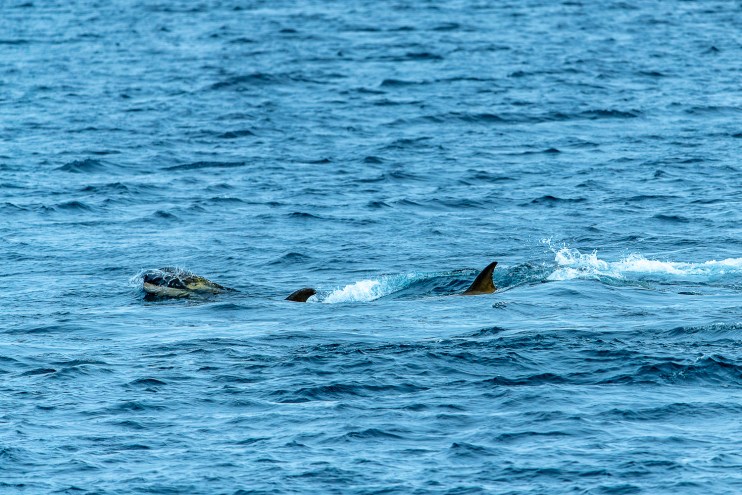
 \
\




A Giant petrel enjoys the leftovers.



Fin whales really working the krill…


The Blue whale appears in the evening…










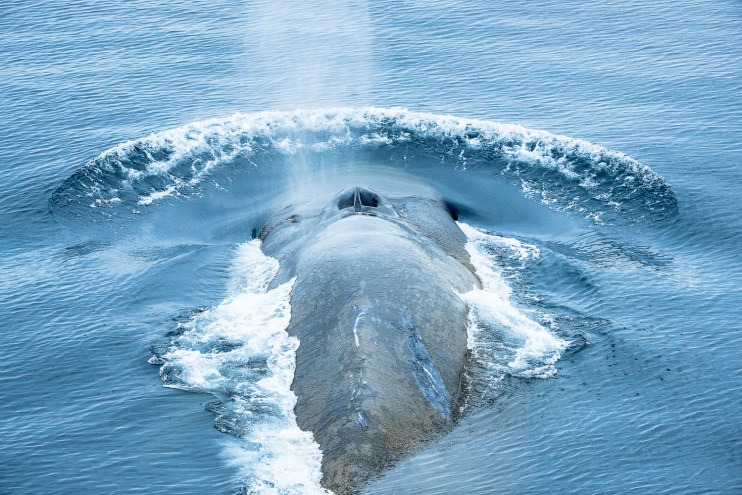






Our last night and yes, more beauty…



Our final morning was spent at our last penguin colony at Paulet Island, one of the three islands which form the north shore of the Antarctic Sound. The current there was impressive until one huge iceberg was obviously too big and ground to halt a by the ship leading to a pile up of other bergs.

Dawn of our final morning…










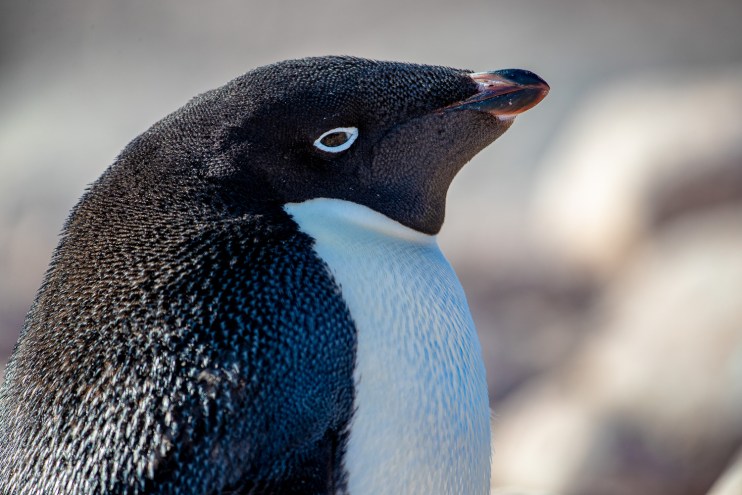












An Antarctic or blue-eyed shag colony…





From Paulet we began the journey north, through the South Shetlands and back across the Drake Passage. We enjoyed more whale sightings with fin, killers and humpbacks before it was time to pick up the pace in earnest.






The Drake Passage this time was into an 85mph wind so the Captain upgraded his rating to 7/10 and we experienced the burying of the ship’s bow right into the waves. The big winds brought the albatross closer which made for a great finale to the incredible expedition we had experienced.

Our friends the Giant petrel returned…


…and with the stronger wind the Albatross came closer but it was still very difficult to photograph them…


The Albertross were the most beautiful, graceful and dignified creatures…
When discussing shore excursions, the number of passengers on the ship is a topic that quickly comes to mind. We were basically 100 passengers split into two groups, A and B. One or other of the groups would be invited to disembark first and then the second group would follow. It was pretty painless with little waiting around. Everyone had to wear life jackets and their expedition parka. There was a time for last zodiac back and everyone had to register off and on the ship so they knew that nobody was being left behind. I have not been on a ship with perhaps double that number of passengers but I wonder how quickly they disembark and whether the numbers do impact the experience especially having enjoyed the 100 passenger experience. We felt lucky. Once ashore, the guides would brief each arriving boat about what to do and where to go. A path was often marked out with cones. They were not trying to nanny us but trying to ensure areas where there were very young birds were left alone, areas where there was soft ground were avoided and also trying to minimise situations where young birds were inadvertently spooked into the water to possibly waiting leopard seals. From a photographer’s point of view, the place to be was by the sea where birds would depart and arrive in spectacular fashion. This was where much of the action was with penguins racing up the beach underwater and exploding from the water at the last moment. Wherever we were, penguins had right of way and we were not to touch them. There was always the ever-present danger of Antarctic skuas looking to spook a young bird, separate it from the colony and then pick it off. They would patrol the colony swooping to try and scare the chicks.

The crew make the expedition flag and it is auctioned off in aid of a crew charity at the end of the trip.
Zodiac cruises were carried out in the same manner except there were only 14 zodiacs some of which had to be used by the scientific team so the cruises were shorter than the shore excursions because of the need to take others. Each boat would have their own unique experiences depending on what whales, penguins, seals (Leopard, Crabeater, Fur and Weddell) and or birds popped up at the time. Although it was possible to follow whales in the zodiacs or even the kayaks, the majority of our sightings happened to be from the ship itself and this was no bad thing. It would have been cold and chaotic trying to keep up with whales on the move in a team of zodiacs and yet from the ship it was a pleasure and we all benefitted from the knowledge of the whale naturalist Conor Ryan, also from County Cork, Ireland, and we were able to enjoy hot chocolate at the same time!

There was no shortage of lectures by the naturalists each day as well as evening reviews and briefings for the following day. There were the following lectures:
747s of the Southern Ocean, a presentation on seabirds with naturalist Karen Velas.
An Introduction to the Antarctic Treaty with naturalist Gabriela Roldan.
Whales of the Southern Ocean with naturalist Conor Ryan.
To Be a Penguin with naturalist Ian Bullock.
The Glacial Ice of Antarctica with naturalist Andreas Madsen.
Journey of a National Geographic Photographer by Krystle Wright.
Women in the Antarctic with naturalist Gabriela Roldan.
Ernest Shackleton, Live Donkey or Dead Lion by naturalist Ian Bullock.
The TV documentary Chasing Ice.
Geology of Antarctica with naturalist Andreas Madsen.
Secret Life of Krill by undersea specialist Maya Santangelo

These lectures were excellent, delivered with a sense of humour, not too long and not overly detailed. As a photographer keen to achieve great imagery I think my only minor issue was the inability to allow the time to pursue difficult images such as the jumping penguins. With others on the zodiacs with different interests it was tricky. It may have been a good idea to have tried to put keen photographers together in the zodiacs in order to maximise time on certain subjects. Those in the zodiacs with the two resident photographers benefitted from their knowledge of angles and the time required to get the right photograph.

Melting… Antarctica is melting…
Relating what happened and how it was organised has been the easy part to this blog. It could have gone on and on into more detail. The difficult part to express is what I thought and how I felt about it all. I need to start by saying that I was impressed by the ship and its crew and how things were run and done and I think being just 100 passengers must be a benefit in many ways. The ship was way more comfortable than I imagined and the food really was good. Antarctica was truly magnificent but when you look at where we went on a map, we barely tickled it. We did the equivalent of landing on a couple of Australian beaches and popping into a few bays and then saying we have been to Australia – the only difference is Australia is smaller. I am glad that the Drake Passage treated us appropriately. It would have been disappointing not to have felt we earned being there had there been a flat, calm crossing. The albatross and petrels really captured my imagination, 11-foot wing-span and not touching land in that environment for seven years. They are the most captivating bird. The penguins completely charmed me in every way, I did not mind the smell in the colonies but make no mistake, it was smelly! I felt very anti-social because I spent more time than anyone outside the observation lounge with three cameras on the benches like a sentry looking for signs of life and light on the landscape. In hindsight, given the images and reflecting on where I have been, I am glad I did what I did. We were very, very lucky with the weather thanks to Peter and Captain Wood but the grandeur of the ice and the landscapes in the mornings and evenings with the pastel coloured skies and almost glowing ice was truly magnificent. I have not, and likely will not, experience anything like it again in such perfect weather.

Our final evening on board as we set off to cross the Drake Passage…
I do however admit that I reflect a lot on whether we should be there at all. Lecture after lecture considered the damage than man has done due to his presence there or is doing along with the impact of global warming. Comments like 29,000 blue whales were taken in the 1931 whaling season compared to the fact that there are likely 10,000 to 25,000 left in the world today. Man is taking too much krill from Antarctica to use for fish farms and fish food. Even the flaked fish food we buy for our goldfish is made of krill from Antarctica. Every pound of farmed fish produced requires three pounds of food taken from the sea to produce it. Some penguin populations are plummeting with the Adélie penguins suffering the worst because they eat the bigger krill that reside under icebergs. There are fewer icebergs so less krill. Snow would shake off but now they get wet with rain and then freeze in the Antarctic winds and eggs get drowned in flooded nests. Every lecture pointed to the fact that man was somehow destroying Antarctica. It begs the nagging question of whether, given it takes at least four flights to get there plus the ship, we should be there at all?

Jane Rumble, Head of Polar Regions at the British Foreign Office in 2015 suggested that “It is better to have a certain level of responsible tourism than for it to go under the radar”. In essence, without a native population, Antarctica needs ambassadors and advocates and tourism creates such global representatives ready to support and perhaps fund its preservation. This seems to be the continued theme and justification for tourism in Antarctica which has likely reached 50,000 people this year. Most tourism organisations are part of the International Maritime Organisation which is just introducing a stricter polar code, and at present all the companies regularly bringing tourists to Antarctica are members of the International Association of Antarctic Tour Operators (IAATO) which works closely with the Antarctic Treaty. The treaty was signed in 1961 by Argentina, Australia, Belgium, Chile, France, Japan, New Zealand, Norway, Russia, South Africa, the UK and USA. Another 34 countries have since signed up. It is designed to demilitarise Antarctica and ensure it is a nuclear-free zone while also fostering scientific cooperation.

What was missing from all the lectures was advice on how we could help stop global warming and the impact it and other human behaviour has on Antarctica and the world at large. With my daughter Maddie’s help I have compiled two lists of changes we can make which I feel passengers may have appreciated
Cheap and Easy
- Less water in your kettle
- Reduce food waste
- Shower not bath
- Walk if you can
- Reduce meat consumption – particularly beef and lamb
- Avoid farmed salmon, especially krill-fed salmon
- Buy local and seasonal
- Look where your food is coming from – boats better than planes
- Reduce consumption of commodities (clothing, electrical goods etc)
- Change to LED light bulbs and switch off the lights
More costly or complex but do-able
- Fly less and if you fly off-set your carbon
- Plant trees (support local greening charity)
- Donate to a charity which works on climate change
- Change to an electric car
- Drive instead of fly
- Switch to renewable energy in your home
- Be an advocate, influence others
- Buy from companies that are committed to decarbonisation and who are divesting from fossil fuels
- Change your utility company to one that sells renewable power
- Improve and, if necessary, change your home’s energy efficiency
I cannot help but recommend Antarctica but in doing so, I equally must recommend some or all of the items on the above lists. It will be an experience you will never forget. They say that India is an assault on the senses…well Antarctica is a full-on assault but of a different kind. It is educational and humbling and you will return moved to contribute to arresting man’s seemingly inevitable destruction of the planet.

Clothing Guideline
Multiple layers for under your expedition parka
Layers to keep legs warm with waterproof trousers on top
Gloves – warm and waterproof
Glasses plus spare
Buffs for the neck to avoid wind chill
Warm woolly hats which cover the ears (temperatures around freezing to 5 degrees plus wind-chill) and stay on well
Warm socks
Wellington boots with treads
Waterproof rucksack for layers of clothing and camera/s
Casual clothes for meal times, maybe a little less casual for dinners
Sun/wind screen
Lip balm/moisturiser
Comfortable and warm outdoor shoes for the ship
Shoes for meal times
Toiletries and medication, especially for sea sickness
Night gown/pyjamas

Camera Equipment
Two bodies (full frame and max pixels for one and high shutter speed for the other)
24-70mm 2.8 zoom
Either 70-200 mm 2.8 zoom or 100-400mm f4 – 5.6
If possible 200 – 400 mm
Polarised filters
Waterproof backpack
Tripod or Monopod – both used very little
Osmo Pocket for video

The authour/photographer…
Further Notes
Super-wide angle such 16-35 or more not really needed.
On-line there is much talk about avoiding condensation from the cold outside and the warmth inside. This is less drastic in the summer months and the waterproof backpack does the job quite well.
I used the 200-400 a huge amount – it was the best lens of all for this trip


Comments 6
Hi Tarquin! Thank you for these incredible images. We are going in November and I look forward to experiencing the pristine conditions of that time of the year. I wholly sympathize with your concern as to whether or not we should be there at all. We’ll be with Nat Geo and so I feel that we’re with a reputable and considerate company. However, when I hear stories about how people accidentally drop their camera in the water while getting in or out of the zodiacs I know that the area is changed forever. Thank you for sharing your incredible experience with us!
Author
Thank you Kathy, for your kind words. Enjoy and let me know how you get on!
What a trip Tarquin. We can enjoy it vicariously! Great to see the comments re carbon footprint. Frontiers can do a lot to encourage offsetting by travel companies and really lead the way. It would be another feather in your company cap!
Author
Thanks Arthur, it truly was…
Awesome trip. Once in a lifetime opportunity! Amazing photos.
Author
Thank you Phil – glad you enjoyed it!